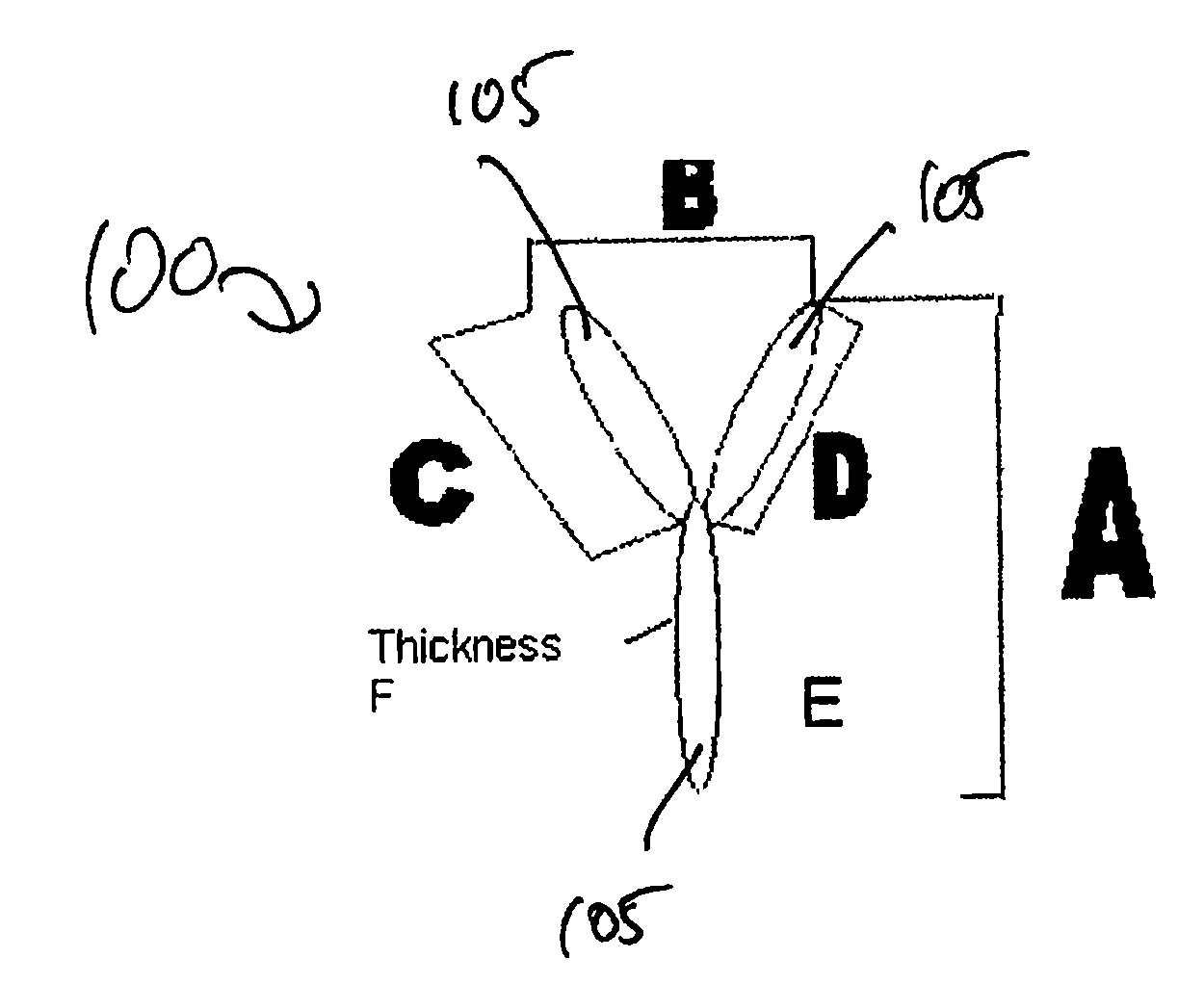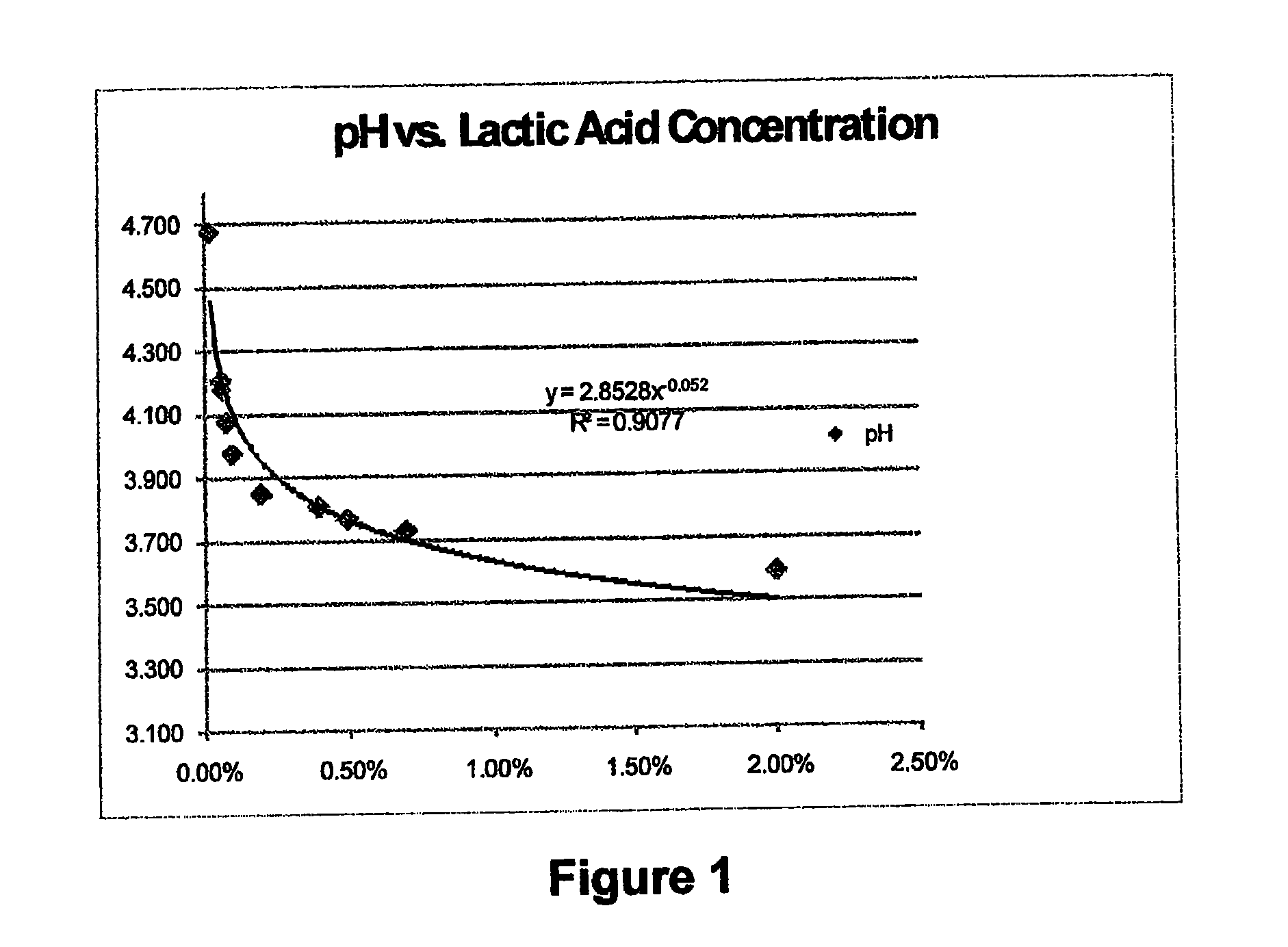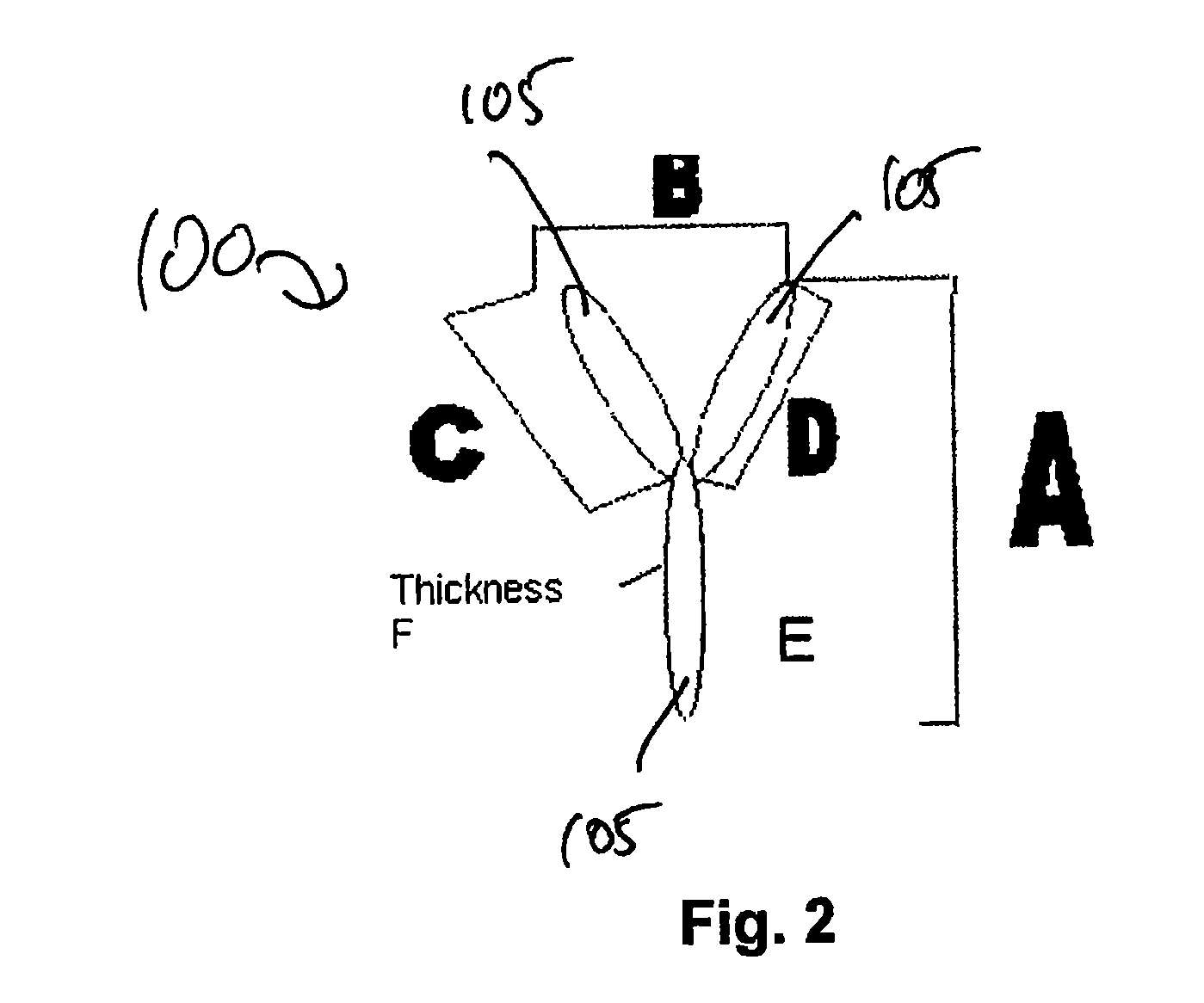LOW pH, OPTIMAL ORP, AND ODOR-REDUCING FIBERS, A PROCESS FOR MAKING THE FIBERS, AND ARTICLES MADE THEREFROM
a fiber and odor-reducing technology, applied in the field of fibers, can solve the problems of harmful bacteria and many women's menstrual odors, and achieve the effects of reducing odor, reducing ph, and controlling orp
- Summary
- Abstract
- Description
- Claims
- Application Information
AI Technical Summary
Benefits of technology
Problems solved by technology
Method used
Image
Examples
Embodiment Construction
[0020]As discussed above, several additives are added to the fiber, to achieve low pH and ORP control when the fibers are in an aqueous environment. These additives include acids, alone or in conjunction with mineral salts thereof, and finishing agents. In one embodiment, the acids and optionally the mineral salts thereof are added after the cellulose has been regenerated from viscose. Other optional ingredients may also be added to the fibers, including but not limited to non-acids and encapsulating agents. The order of addition of these optional additive chemicals may vary slightly. Additions are usually made before the fiber is cut to size, but could be done after this.
A. Acids
[0021]One of the additives used to treat the fibers is an acid, alone or in combination with a mineral salt thereof. The present disclosure uses the term “mineral salt” to indicate a salt of the chosen acid that would produce the same anion as the acid, and thus provide a pH buffering effect. Examples of me...
PUM
| Property | Measurement | Unit |
|---|---|---|
| Fraction | aaaaa | aaaaa |
| Fraction | aaaaa | aaaaa |
| Fraction | aaaaa | aaaaa |
Abstract
Description
Claims
Application Information
 Login to View More
Login to View More - Generate Ideas
- Intellectual Property
- Life Sciences
- Materials
- Tech Scout
- Unparalleled Data Quality
- Higher Quality Content
- 60% Fewer Hallucinations
Browse by: Latest US Patents, China's latest patents, Technical Efficacy Thesaurus, Application Domain, Technology Topic, Popular Technical Reports.
© 2025 PatSnap. All rights reserved.Legal|Privacy policy|Modern Slavery Act Transparency Statement|Sitemap|About US| Contact US: help@patsnap.com



